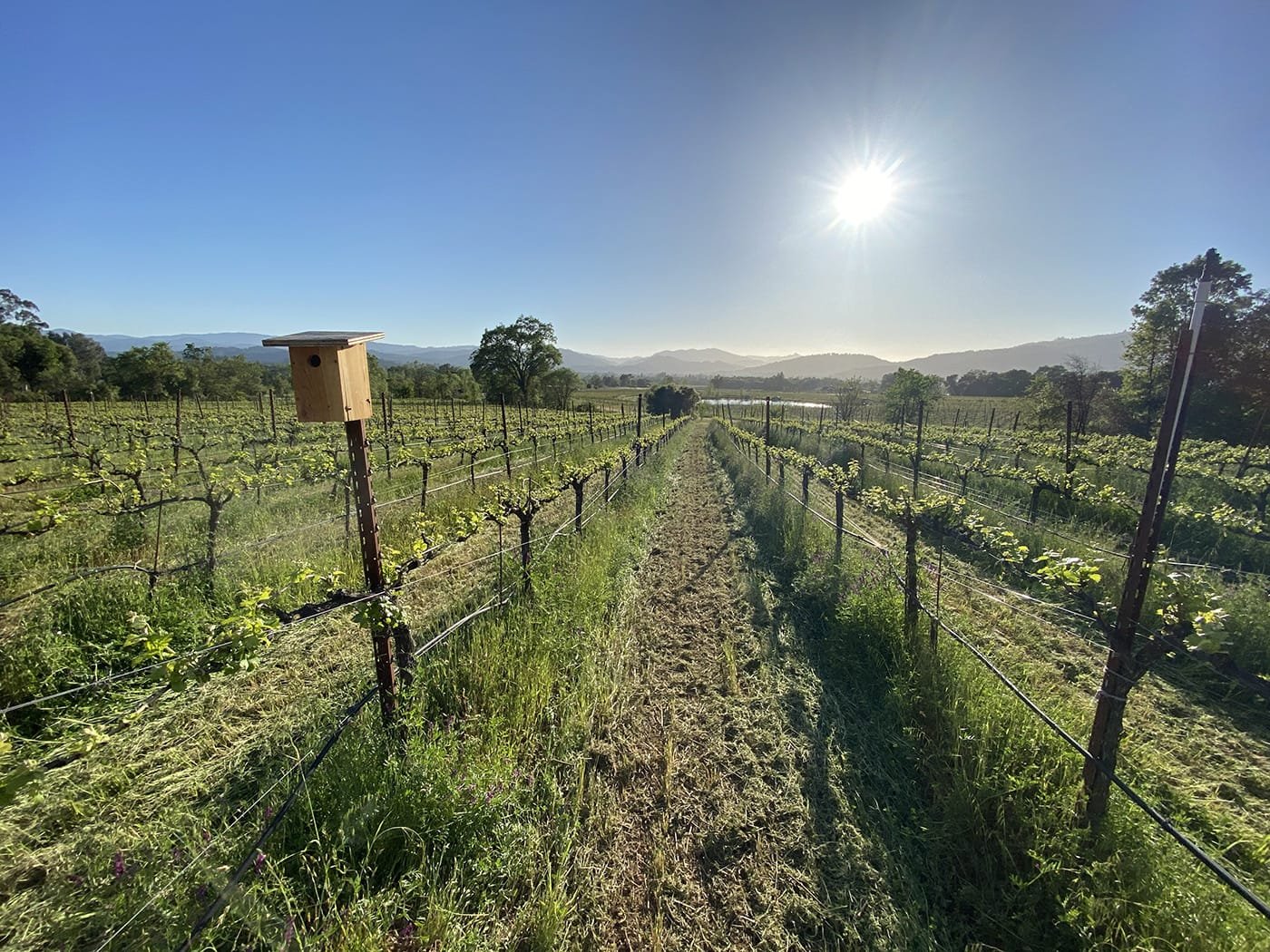Birdhouses in the Vineyard, 2021
Bluebird mother sitting on her eggs.
Here’s an update from our birdhouses in the vineyard, 2021
In 2020 we put up 33 birdhouses in our vineyards to attract bluebirds and other species in need of nesting sites. They also help the vineyards by feeding on insects. 102 chicks fledged over that summer. Check out my blog post last year for the backstory and how we used mostly recycled wood to build the boxes. Birdhouses are easy to make and maintain, and we encourage you to make your own to help out your local bird population. A great resource can be found at the Cornell Lab of Ornithology website.
Birdhouses in the Vineyard, 2021
This year we nearly quadrupled the number of birdhouses to 121, and 554 chicks successfully fledged the nests!
Total fledged:
336 bluebirds
172 tree swallows
29 house sparrows
11 ash throated flycatchers
6 white breasted nuthatches
Birdhouses to be added to our vineyards
This is more than quadruple the number of fledglings from 2020. Last year we learned that the birds in general prefer boxes hung on metal stakes in the open vineyards over boxes placed in trees. If a box was vacant, more often than not it was in a tree. The birds know what we observed: boxes in trees had a higher rate of disturbed nests. Racoons and snakes can easily climb trees and reach in for the chicks, but the metal stakes are nearly impossible to climb for predators. Also, mice like to turn birdhouses into their private apartments. Even after eviction, birds seem to avoid the boxes. No mouse squatters appeared in the birdhouses hung high on metal poles. Of course not all birdhouses in trees had problems and birds will use whatever suitable hole in a tree they can find, but in general the rate of troubled nests was much higher in trees.
An unlikely resident!
Of the 121 birdhouses, 26 remained unoccupied throughout the breeding season, usually those on trees or were in the shade for most of the day. Of the 95 boxes that were taken up by the birds, 36 of them were used twice! After a pair finished raising their brood and moved on, another pair sometimes moved in. That makes 131 successful nesting pairs using only 121 boxes.
Birdhouses in the Vineyard, 2021
As spring turned to summer, the number of nesting birds dropped off and the number of chicks per family declined as well. In spring when insects were plentiful, bluebirds and tree swallows averaged 5 or 6 chicks in a box. Later in the summer the average dropped to 3 or 4. Nature can be brutal, as many chicks don't make it. A brood of 6 chicks might decline to 3 later in the summer, probably because of fewer insects for the parents to catch. Inexplicably, around three nests were completely abandoned, each with 5 or 6 fledglings, the parents likely victims of predation.
Bird nest in one of the birdhouses in the vineyard, 2021
I checked all 121 birdhouses about every 10 days, often with the help of my 10 year-old sun Julian and 6 year-old daughter Sofia, counting the eggs, chicks, and noting if they had fledged. Some online sources recommend checking every 5 days, but it takes a lot of time to go from box to box, using a ladder or climbing onto the back of a pickup to reach the boxes. Each box has a door for inspection and cleaning. After a pair of birds raise and fledge their babies, the nest gets cleaned out. If it’s not too late in the season, another pair of birds will use the same box. When cleaning out a bird box, be sure to wear a mask and take note of which way the wind is blowing. The chicks leave a lot very dusty bird waste behind, that you don’t want to breathe.
The boxes set up last year were left out in the vineyards over the winter. They got noticeably weathered by the cycles of rain and sun, cold and heat, after just one season. So this year most were removed at the end of summer and placed in dry storage for the winter. They’ll be put out again early next spring. We hope this will add several years to the life of these wooden birdhouses. At the ends of the rows of most of our vineyards are metal pipes used as anchors for the trellises. The metal stakes, with the birdhouses attached on top, can easily slip into these thick pipes, making for easy installation and removal. Removing them at the end of summer also helps the harvest crew, as they otherwise would have to get them out of the way for the harvest machines.
Baby birds in one of the birdhouses in the vineyard, 2021
We look forward to spring 2022 for another season of raising bluebird chicks in the vineyards!







